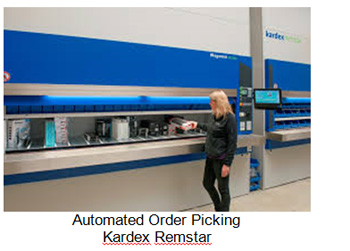Holste Says: |
 |
| It is important to understand that while a company's business model may be unique, the logistics system concepts and material handling equipment technologies that will be most beneficial for their operation is not unique. |
|
What Do You Say?
|
|
|
|
Previous Columns by
Cliff Holste |
|
|
ProMat 2015 is rapidly approaching. Over 800 exhibitors will be on-hand to promote the latest manufacturing and logistics technologies. Much attention will be focused on the application of automated processes for warehousing and distribution. For the most part, the target audience is anyone looking for ways to improve their operations. However, for an improvement project to get the attention of top management it will most likely need to provide ROI in areas such as:
• |
Improved shipping capacity and productivity
|
• |
More efficient utilization of facility space, energy, and human resources
|
• |
B2C Omni Channel order fulfillment processes
|
• |
Increased order fulfillment speed and accuracy especially as related to e-commerce
|
• |
Higher throughput without incremental increases in labor
|
• |
Greater system flexibility and agility
|
• |
Reduction in overtime hours
|
• |
Reduction in errors, damage, shrinkage, and back charges.
|
• |
Improved methods for returns processing
|
 Still, projects that will accomplish the above will not be adopted unless top management actively promotes an environment that encourages associates to come forward with creative cost effective improvement projects. Still, projects that will accomplish the above will not be adopted unless top management actively promotes an environment that encourages associates to come forward with creative cost effective improvement projects.
This point cannot be emphasized too strongly. Because, all too often astute individuals eager to start projects involving the application of advanced concepts, new methods or technologies are discouraged by business managers who tell them that “the timing is bad” or its “too risky - the front office won’t buy it”.
To correct this impression, top management must spell out long-range objectives in terms that mean something to operation managers, engineers and planners. A top executive who has never received even a preliminary proposal involving creative approaches to improving processing operations should look for answers to the following introspective type questions:
• |
Is the company’s production expertise in balance with its warehousing and distribution capabilities?
|
• |
Has the company’s approach to materials handling remained static? |
• |
Is there any indication that warehousing and distribution managers automatically turn-off discussion of improvement projects involving application of advanced technologies?
|
• |
Is the company’s IT department adequately staffed to handle improvement projects? |
|